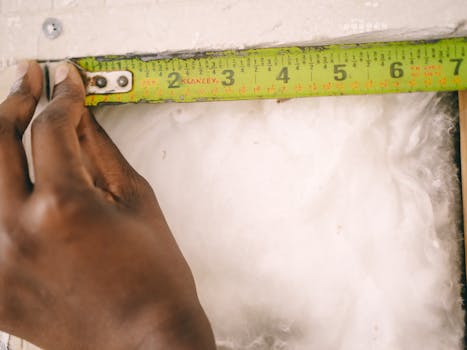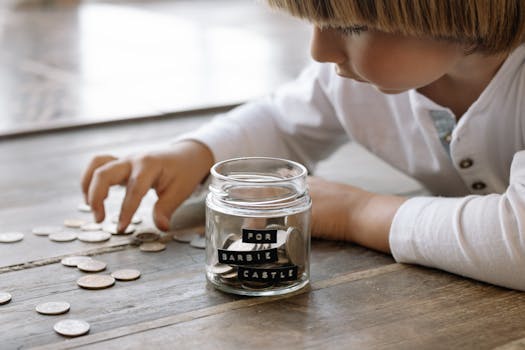Household Economy
Cut Water Bills With Easy Daily Changes: Real Steps for Real Savings
Quickly cut water bills with daily practical changes. Learn to spot leaks, update routines, and choose smarter habits indoors and outdoors. Save money while supporting a sustainable, efficient household.
Advertisement
Standing at the sink, waiting for the water to warm, you wonder why your monthly bill keeps climbing. Those small habits can add up—sometimes more than you expect. With the right steps, it’s possible to cut water bills meaningfully without drastically changing your day.
Water costs hit every household, whether you live in a bustling city or a quiet suburb. These charges rise yearly and, once ignored, keep eating into your budget. Luckily, most people can reduce their spending by adjusting just a few key routines.
You’re about to discover strategies and examples you can try tonight or tomorrow morning. Each idea aims to leave you with practical actions, not just theory, so let’s dive in and help you cut water bills using proven, actionable methods.
Upgrade Shower Routines to Save Gallons Every Week
Quickly altering how you shower can shrink your water use dramatically and directly cut water bills by the next cycle. Changing these habits works because showers are one of the largest daily sources of water use for families.
Picture a 15-minute shower turning into seven minutes. This one shift alone can save dozens of gallons each session, especially when paired with a low-flow showerhead and a precise morning routine.
Use a Shower Timer for Immediate Feedback
Setting a small timer on your phone or a dedicated waterproof version on the wall strips away guesswork. By hearing or seeing the time left, it’s easier to stay focused and finish promptly each time.
The script, “I’ll be out by the time my playlist ends,” helps create a familiar, repeatable boundary. Over a week, this makes shorter showers automatic rather than forced, sustaining savings without stress.
Pair this with a cold-water finish: as you rinse, turn the knob cooler. This quick change both wakes you up and nudges you out faster, so you naturally use less water over each session.
Swap Out Showerheads—Here’s the Comparison
Low-flow showerheads limit output but maintain pressure, ensuring showers feel satisfying without waste. These are easy for renters or homeowners—most twist on in minutes and don’t require a plumber.
Hudson, a dad in Seattle, swapped to a 1.5-gallon-per-minute head and told his kids, “This is a game—let’s finish showers before Mom calls for dinner.” They now use roughly 30% less water each month.
You don’t have to sacrifice comfort: Many models have “pause” buttons, letting users stop the flow while soaping up and resume when ready to rinse—just like pausing music mid-song without skipping a beat.
| Showerhead Type | Typical Flow Rate (GPM) | Annual Water Used (families) | Actionable Takeaway |
|---|---|---|---|
| Old Standard | 2.5+ | 11,000–14,000 gal | Replace immediately to see savings |
| Moderate-Efficiency | 2.0 | ~8,000 gal | Swap in for moderate savings |
| Low-Flow | 1.5 | 5,000–6,000 gal | Best for maximum savings |
| Eco-Pause | 1.5 (with pause) | ~4,500 gal | Combine pause with shorter sessions |
| Handheld Eco | 1.25–1.5 | 4,000–5,500 gal | Great for kids/special needs |
Fix Leaks and Drips: Address Small Issues Before They Grow
Paying attention to leaks and addressing them quickly leads to immediate monthly savings, since the smallest drip can run up your cut water bills target faster than expected. Letting a small drip go for weeks costs more than you’d think.
For instance, tightening a loose kitchen faucet can halt an invisible trickle that loses over 100 gallons monthly. These quick fixes cut water bills in noticeable ways if they become a consistent part of home maintenance.
Pinpoint Leaks Before They Become Major Problems
Walk the house with a tissue: wipe under faucets, pipe joints, and toilet bases. Notice dampness, discoloration, or mold odors—these are clues. Write down what you find and mark urgent ones with a bright sticky note as a reminder.
Don’t wait for the telltale puddle on the floor. If your water meter ticks upward at night when all taps are closed, you likely have an invisible leak under the surface.
- Touch for condensation underneath pipes. If they feel wet even hours after use, investigate further —fix right away to prevent damage.
- Listen for quiet hissing from toilets or walls at night. This sound means water is escaping—use food coloring in the toilet tank to spot leaks.
- Feel under sinks for cool, wet patches and use a tissue to confirm—they waste gallons and invite mildew.
- Check washers in faucets—replace worn rubber rings once they become hard or brittle, using a flathead screwdriver for a quick swap.
- Inspect garden hoses and exterior faucets—cracks leak without making a puddle if the ground drains quickly; swap cracked hoses before watering season.
Small repairs with $5 washers or basic tools can cut water bills much faster than bigger remodels and prevent floor or wall damage from mold.
Implement a Weekly Leak-Check Routine
Set a Saturday morning alarm to walk around and review known trouble spots for leaks. If you turn this into a habit, future repairs become quick fixes rather than emergencies.
Ask family members to mention new noises or puddles as soon as they notice. Kids, in particular, sometimes ignore slow drips while brushing teeth; making it a game to “catch drips” speeds results.
- Wipe fixture bases and look for puddles. Mark recurring issues on a calendar and fix them by the following weekend.
- Squeeze handles firmly; loose handles cause hidden leaks. Tighten with pliers, then test again.
- Check toilet tanks for cold-water sweats in humid months. Add a liner if you see condensation every week.
- Review water bill statements monthly, watch for unexplained increases, and investigate every spike—even if it’s only a few dollars.
- Keep replacement washers, plumber’s tape, and a small wrench in a labeled kit handy for quick repairs and consistent savings.
Maintaining a simple tool kit ensures you address small issues before they waste gallons—an easy monthly habit to cut water bills across the year.
Upgrade Toilets and Faucets for Consistent, Long-Term Savings
Replacing outdated toilets and faucets pays off quickly. When you opt for WaterSense-certified products, you can cut water bills while keeping household routines unchanged—your family won’t even notice a difference in comfort or convenience.
Fixture upgrades might seem like big decisions, but most modern options are straightforward to install and begin saving money right away, especially in homes with older plumbing or many occupants.
Try Toilet Tank Banks and Displacement Devices
Tank banks, filled with water or pebbles, trim each flush’s volume—ideal if replacing your toilet is out of reach. The device slips inside your tank, reducing water use per flush without losing effectiveness.
Pete, a renter in Florida, keeps a filled plastic bottle in his toilet tank. He explains, “Every flush saves me a bit, and I don’t even notice. The utility bill came down after two months.”
To install, simply fill a used jug with water, drop it gently into the tank (avoiding the mechanisms), and flush as normal. Simple steps like this stack up across dozens of daily flushes, quietly cutting costs.
Install Faucet Aerators to Limit Water Without Losing Pressure
Small faucet aerators, which screw on in seconds, introduce air into the water stream. This makes handwashing and dish rinsing just as effective as before, but at a lower flow rate.
Amy, a college student, says, “I told myself, ‘If this makes rinsing slower, I’ll take it off.’ Instead, I forgot it was there—until my landlord mentioned how much less water we were using.”
Check that your kitchen and bathroom taps have modern aerators by unscrewing the tip. If water splashes wide, upgrade to a $2–$5 aerator for peace of mind, then appreciate the smaller bill next month.
Revise Laundry Habits so Each Load Delivers Maximum Value
Washing clothes smartly reduces water waste immediately and helps cut water bills without sacrificing cleanliness. Modern laundry practices make every load count—both for your wallet and for your clothing’s longevity.
If you’re already running several small loads out of habit, shifting toward fewer, larger loads means less water gets wasted on partial cycles.
Prioritize Full Loads and Lower Wash Settings
Sarah, scanning a hamper before bed, repeats aloud, “Are the towels really dirty? What can wait until tomorrow?” This small habit saves water by making sure each cycle is worthwhile.
Turning the dial to “light soil” or “short wash” cuts 20–35% of water use, since most laundry doesn’t need a heavy cycle. Old models benefit most, but even HE washers save more on short settings.
Just like combining errands into one trip, batching laundry loads avoids waste. Encourage roommates or kids to agree on laundry day, then celebrate the new, lower statement together a month later.
Upgrade to HE Washers for Consistent Results
High-efficiency (HE) washers cut water use by up to 50% per load. If you’re buying new appliances, check the water factor rating and opt for one labeled 4.5 or lower for best performance.
Appliance stores can demonstrate the difference in drum size and water intake—HE drums fill only enough to cover clothes, unlike older agitator models that fill to the top each cycle.
If an upgrade isn’t possible now, stick with batching and lower-soil settings. Tweak these variables and track the bill—most families notice quick results with even small changes.
Choose Smarter Kitchen Water Habits All Day Long
Changing how you use water in the kitchen rewards you with daily cut water bills progress, especially if multiple people cook or clean dishes throughout the day. These shifts are simple to implement as family habits.
Most waste in the kitchen comes not from the dishwasher but from pre-rinsing and hand-washing dishes under a running tap. Identifying new routines keeps water and energy usage low.
Skip the Sink Pre-Rinse Whenever Possible
Danny, a busy parent, used to rinse every dish before adding it to the dishwasher. After learning that modern washers clean well even with residue, he changed his rhythm: “Now, I scrape plates and load—they all come out clean.”
The energy label on newer dishwashers means they operate best when full and skip unnecessary rinsing. This tweak conserves gallons daily and can cut water bills meaningfully over a few billing cycles.
Try this script: “Scrape, load, and close the door.” With young helpers, make it a race to see who can load without turning on the tap, then reward the winner with first pick of dessert.
Batch Water Use for Cooking and Cleanup
Boil water in measured amounts and re-use rinse water for composting or plant care when possible. For pasta, use leftover cooled water to refresh indoor plants instead of letting it run down the drain.
Jackie, who hosts frequent dinners, keeps a “reuse” pitcher on the counter and tells guests, “If water’s clean enough, we use it twice.” This routine encourages everyone to rethink how they pour and discard.
Small acts, like filling the kettle just for your mug or soaking pans with a splash instead of a torrent, persistently contribute to lower usage and demonstrate care for both the home and the environment.
Update Outdoor Watering and Car Washing Methods for Major Impact
Smart outdoor habits yield some of the fastest ways to cut water bills if your home has a yard, trees, or a car that needs periodic cleaning. Each improvement here makes your home more resilient, too.
Replacing a garden hose with a drip irrigation system or rain barrel scales up savings and ensures plants thrive without overwatering. These choices deliver the most impact during hot, dry months.
Use Timers and Sensors to Avoid Runoff
Install hose timers or soil moisture sensors. Set them to early morning or late evening—never mid-day, when more water evaporates than soaks in. Watch for leaks or bursts, especially where hoses connect to spigots.
When neighbors see you roll up the hose just as the automatic timer beeps, you’ll know your yard is getting textbook care with minimal waste. This takes scheduling out of the equation.
Amy, in Texas, chirps, “I check my sprinkler heads every Friday night—beer in hand, shoes off. Five minutes equals a healthier yard and fewer water bill surprises.”
Wash Vehicles with a Bucket, Not a Hose
Joshua, a weekend car enthusiast, says, “Instead of spraying my truck with the hose, I fill a bucket with soapy water and use a sponge. I get it cleaner and use a fraction of the water.”
Try the two-bucket method: one for soapy water, one for rinsing. This classic trick uses less than five gallons total, compared to 50–60 gallons from a running hose.
Friendly competitions—“Let’s see who can scrub faster”—make this routine fun for families, while you rack up savings without sacrificing that satisfying shine.
Pull Everything Together for a Sustainable, Lower-Cost Lifestyle
Integrating these steps across showering, plumbing, laundry, kitchen, and outdoors keeps your efforts focused and maximizes cut water bills results. Each routine change, once set, becomes second nature over the weeks.
Celebrate visible savings by reviewing your statements with family or housemates. Contextualizing these wins—for instance, paying for a little treat with the savings—helps reinforce these new behaviors and keeps everyone motivated.
With each bill that arrives slightly lower, you establish confidence that daily routines truly matter. Over time, your home becomes a model of efficiency, encouraging neighbors and friends to follow suit.
Frequently Asked Questions
How much water do leaky toilets really waste?
A single running toilet can lose up to 200 gallons of water per day. That amounts to thousands of gallons—and significant cost—over a billing cycle. Quickly inspecting the tank and listening for hissing or running sounds prevents major waste before it hits your statement.
Is it worth buying a dishwasher if I usually wash by hand?
Most Energy Star dishwashers use less water per load than typical hand washing, especially for large batches. The key is to wait until you have a full load, reduce pre-rinsing, and use the dishwasher’s eco mode consistently. Over time, this saves both water and effort.
How can renters cut water bills without major renovations?
Renters can install aerators, use displacement devices in toilet tanks, tighten faucets, and adjust habits like short showers and batching laundry. All changes are reversible and don’t require altering plumbing or structure. These shifts add up to measurable monthly savings.
What’s the best time of day to water my garden?
Early morning or late evening is ideal for watering outdoor plants. Cooler temperatures mean less water evaporates, so more soaks in at the roots. Using a timer ensures you don’t forget or overwater, aligning with local restrictions in dry areas.
Why do water bills spike unexpectedly?
Sudden increases usually indicate hidden leaks, running toilets, or outdoor hoses left on. Check your meter at night for movement and review recent changes in routines. A quick walkthrough can pinpoint new leaks or habits behind unexpected spikes, restoring control to your budget.





